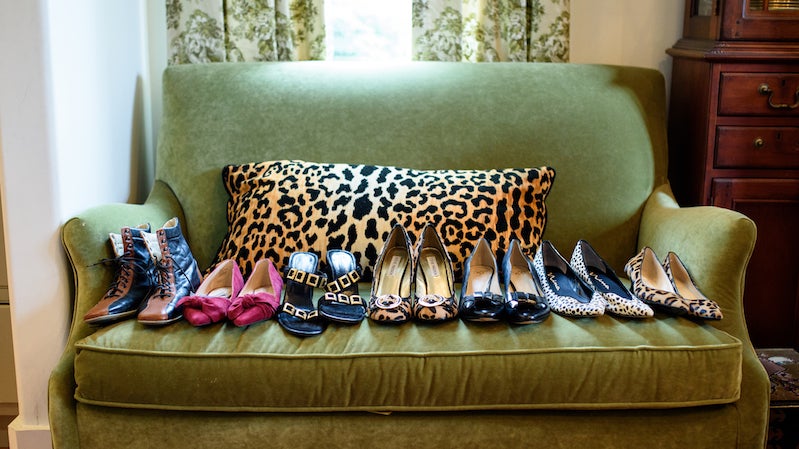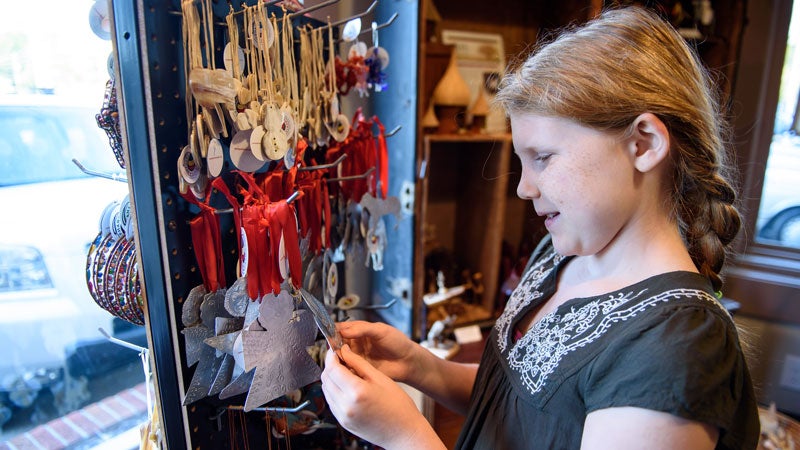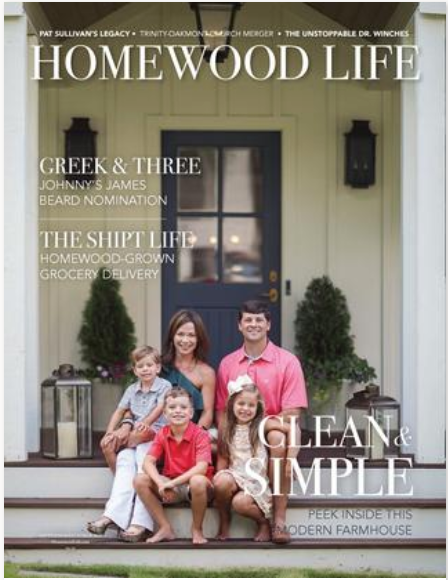It’s a random Tuesday morning and Homewood artist Liz Landgren is poring through the clothing racks at The Salvation Army Family Store and Donation Center on Green Springs Highway. She’s armed with one cup of coffee and one cup of water to fortify her for today’s mission. She raises the coffee to her lips and explains, “You have to stay hydrated and caffeinated because you can’t get tired doing this, because you’re in for the long haul.”
It is the thrill of the hunt that brings her here and keeps her returning to thrift stores across the Birmingham area. “It’s like, a problem I have,” she confides.
“I think about it a lot. Like hunting. Like men feel about hunting ‘cause it’s that feeling that you might FIND—that this is going to be the day that you find that big buck. This is going to be the day that I find the FIND.”
So what, exactly, IS the FIND? It could be the full set of Calphalon pots and pans she once found for $4.99. It could be the official NASA replica moon rocks display my neighbor found here in December. You just never know.
It’s a treasure hunt, and you have to stay alert at all times. The repetitive screech of clothing hangers against the metal bar fills the air, and if you’re not careful, you’d miss the employee emerging from the back room, wheeling what looks like a household recycling bin behind him.
He’s headed for the back of the store with a fresh arrival of shoes. Liz whips her buggy around and heads that way, too, but another woman spots him and spins her cart the other way. Like two pirate ships spotting a vessel in distress across the ocean, they sail through the store, each one racing to be the first to plunder.
But it’s all for naught. The bin is zip-tied shut, and they both must wait until the man goes back to get scissors. The other lady already has a shopping cart full of at least 40 shoes and makes no pretense of politeness when Liz tries to talk to her. She feigns interest in some shoes already on the rack, but she knows there’s nothing good there. Liz hit that area earlier.
A third woman arrives. “Now I’m going to have to be aggressive,” Liz whispers to me. It’s clear she’s uncomfortable, but she has come up against this same woman before. She hates feeling too competitive, but she just can’t help herself.
The man returns with the scissors and cuts the zip tie. Liz’s hands are the first inside. But her nemesis draws blood first: a pair of Coach sneakers. The third woman digs her hands in and a pair of knock-off Ugg boots go tumbling to the floor. It’s too much. Liz is out. She retreats to the men’s department to regroup.
“Oh, here’s this! This is a $200 dollar shirt,” she says. “Ben Sherman.” A quick Google search is all it takes to confirm that the $6.99 shirt on the rack sells new for $200.
But Liz isn’t in to re-selling the things she finds here. What she really likes doing is putting together her own outfits from what she finds. She spends most of her time with paint brush in hand and is in high demand around town for her original oil paintings. Commissions, too. She might buy a jean jacket, take it home and paint the back of it, or cut apart a battered purse and make leather earrings. She’s been doing this since high school, when she discovered the funky looks she could put together.
“I always like to be a trendsetter,” she says. “To have me have to wear the same T-shirt as everybody else for vacation bible school? I will take that T-shirt and cut it into a jacket. (I) might paint it. You know, like I literally can’t look the same as everybody else. I can’t do it.”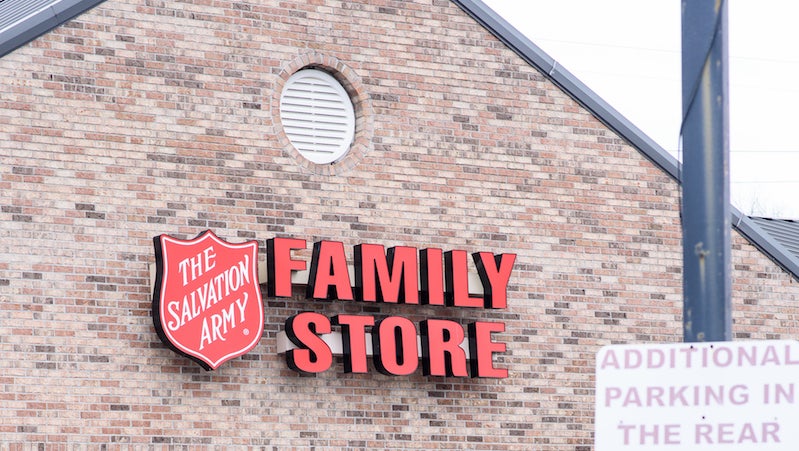
Shopping at thrift stores fills Liz’s artistic needs. And she always looks amazing. But shopping at the Salvation Army does more than that. In the current climate of fast fashion, where cheap clothes are churned out in massive quantities and almost as quickly relegated to landfills, what Liz is doing is the ultimate form of recycling. People are proud to recycle paper, aluminum, glass … so why not clothing?
Americans’ need for new clothes, even in an economic downturn, has given rise to cheap (in material as well as price) mass-produced clothing. A lot of people think nothing about buying a synthetic blouse for $20, wearing it once or twice, and throwing it away. And that’s a LOT of waste.
According to environmentalist researchers, one garbage truck of textiles is dumped in a landfill or incinerated every second, and a lot of those inexpensive fast fashion clothes are made of polyester. Which means they aren’t going to biodegrade any time soon.
The more consumers demand new clothing, the more the textile industry has to create MORE cheap clothing. It’s a vicious cycle that’s not just bad for people’s wallets, it’s bad for the earth.
The need to buy new things can be strong, but a person who could turn that desire to shop toward products that already exist, the fewer new things that would have to be made. And that’s a big factor when so many of the fast fashion clothes are made overseas in less-than-ideal working conditions.
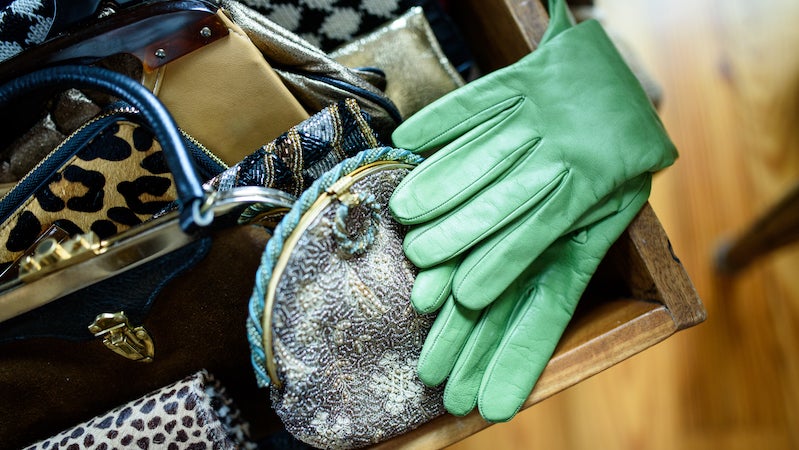
That is something vintage clothing curator Hannah Johnson thinks about a lot. “With this concept of fast fashion comes the stigma of what’s going on in these countries where they’re producing this stuff based on OUR demand. Based on what WE want,” she says. Hannah believes shopping used clothing can alter that narrative. “It’s about … making a difference, taking stress off the communities overseas that are trying to produce so much for us that they can’t possibly do it. It can’t possibly be healthy.”
Plus, shopping in thrift stores funds philanthropic organizations working to help the poor, the homeless, battered women, children in Africa.
Hannah sees a lot of worth in the estate sales and thrift stores. In fact that’s where she got the name of her vintage goods store, WerThēGoodz. She saw perfectly good clothing—50-year-old wool suits—cast-off, and thought, “Who is to say what has worth and what doesn’t?” Not to mention, she says, “If you find something is in the thrift store that’s like 50 years old and it’s still in excellent shape, it’s quality. It’s quality workmanship, it’s quality materials.” It’s wool or cotton or linen, which stands in marked contrast to the synthetic clothing that falls apart in one washing.
And speaking of washing, Hannah points out another environmental implication of laundering all those polyester blouses. “It’s better for our environment that these plastics aren’t being put back into our washing machines and into our oceans.”
It’s a valid point. Research shows washing clothing made (even partially) from plastic leads to micro plastic beads ending up in our oceans. So it’s not just straws we should be worrying about. Sometimes, it’s the shirt on your back.
Hannah is quickly developing a loyal following of women who call her to see what new things she has found. She holds pop-up booths at weekend markets here or in Atlanta, but she’ll also give friends a personal viewing of the beautiful things she has collected, which in between markets are stored in her gorgeous Homewood bungalow. In fact, she says shopping pre-owned clothes isn’t all that different from real estate. Many people don’t insist on new construction when they buy a house. They value older homes made with solid materials featuring classic items like crown moulding. Sure, you could insist on only buying new clothes and spending lots of money in the process, but like Hannah says, “Why would you? “
One more note: What was the FIND of Liz Landgren’s recent trip to The Salvation Army store? A pair of pristine leather Camilla Skovgaard booties that were soft as butter and fit her like a glove. Retail price: $595. Liz snagged them for $8.99.
10 Reasons to Shop at a Thrift Store
- It’s good for the environment.
- You are making the world a better place by not creating more textile waste.
- You are saving money.
- Some thrift stores like The Salvation Army sort clothing by color, meaning if you’re in need of an orange linen blouse, you know exactly where to go looking for it.
- You are helping a charitable organization.
- It’s like a weeding-out service. All of the clothing in thrift stores is good enough that someone already liked it enough to pay full price for it.
- It feeds your competitive nature.
- It feeds your artistic nature.
- You like treasure hunts.
- Who doesn’t like a bargain?

